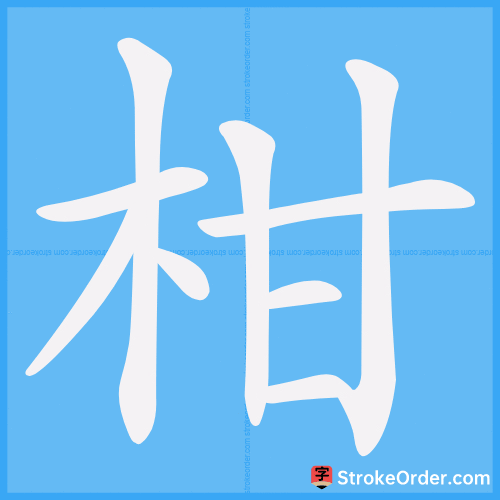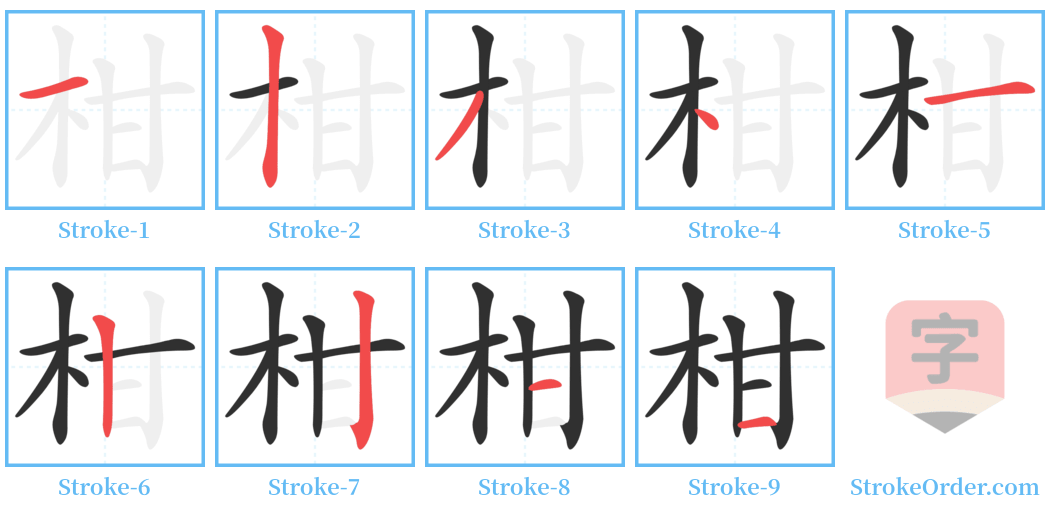柑 Stroke Order
Animated Stroke Order of 柑

Stroke Order Diagrams for 柑

Step-by-Step Handwriting Guide for 柑

Learn to Write Chinese Characters with Video Tutorials
Watch the video of writing the Chinese character "柑", learn the correct stroke order (笔顺) of the character "柑", and master the standard way of writing the character "柑".
Free Printable Handwriting Practice with Stroke Order: 柑
Printable Writing Practice Worksheet of "柑" in Portrait Orientation (Tian Zi Ge)

Printable Writing Practice Worksheet of "柑" in Landscape Orientation (Tian Zi Ge)

Information of 柑
Pinyin
gān
Radical
木
Strokes
9 strokes
Usage
★★★★★
Definition
large tangerine
柑 [gān]
1. A type of evergreen shrub with round fruits that resemble but are larger than tangerines. The fruit is reddish-yellow, and its taste can be sweet or sweet-sour. There are many varieties. The bark, leaves, flowers, and seeds can all be used for medicinal purposes. Examples include: - Types similar to "柑", such as tangerines, pomelos, oranges, etc. Known as "广~" (broad mandarin).
2. (Noun) Refers to the same as the first meaning, specifically the mandarin orange (Citrus reticulata). It is a small thorny citrus tree with compound leaves and small leaf wings. It produces white flowers in late spring and early summer, either solitary or clustered. The fruit is flat and round, red or orange-yellow with a large central column, and its taste varies from sour to sweet. The seeds are mostly polyembryonic and exhibit cold resistance. It can be propagated through grafting, layering, or seed methods. The fruit can be consumed fresh or processed, while the peel, seeds, and leaves are used medicinally. It also refers to the fruit of the mandarin tree, such as in "柑酒" (wine brewed from mandarin oranges).
3. (Derived from historical definitions) (Verb) To place a crossbar on a horse's mouth to prevent it from eating. In "公羊传·宣公十五年," it mentions: "柑马而秣之." Han dynasty's He Xiu's "解诂" interprets it as: "柑者,to use wood to press on its mouth to prevent eating grains, indicating there are stored fodder." This term is also interchangeable with "拑".
Input Method for 柑
Pinyin
gan1
Wubi
safg|sfg
Cangjie
dtm
Zhengma
feb
Four Corner
44970
Unicode
U+67d1
Same Pronunciation Characters